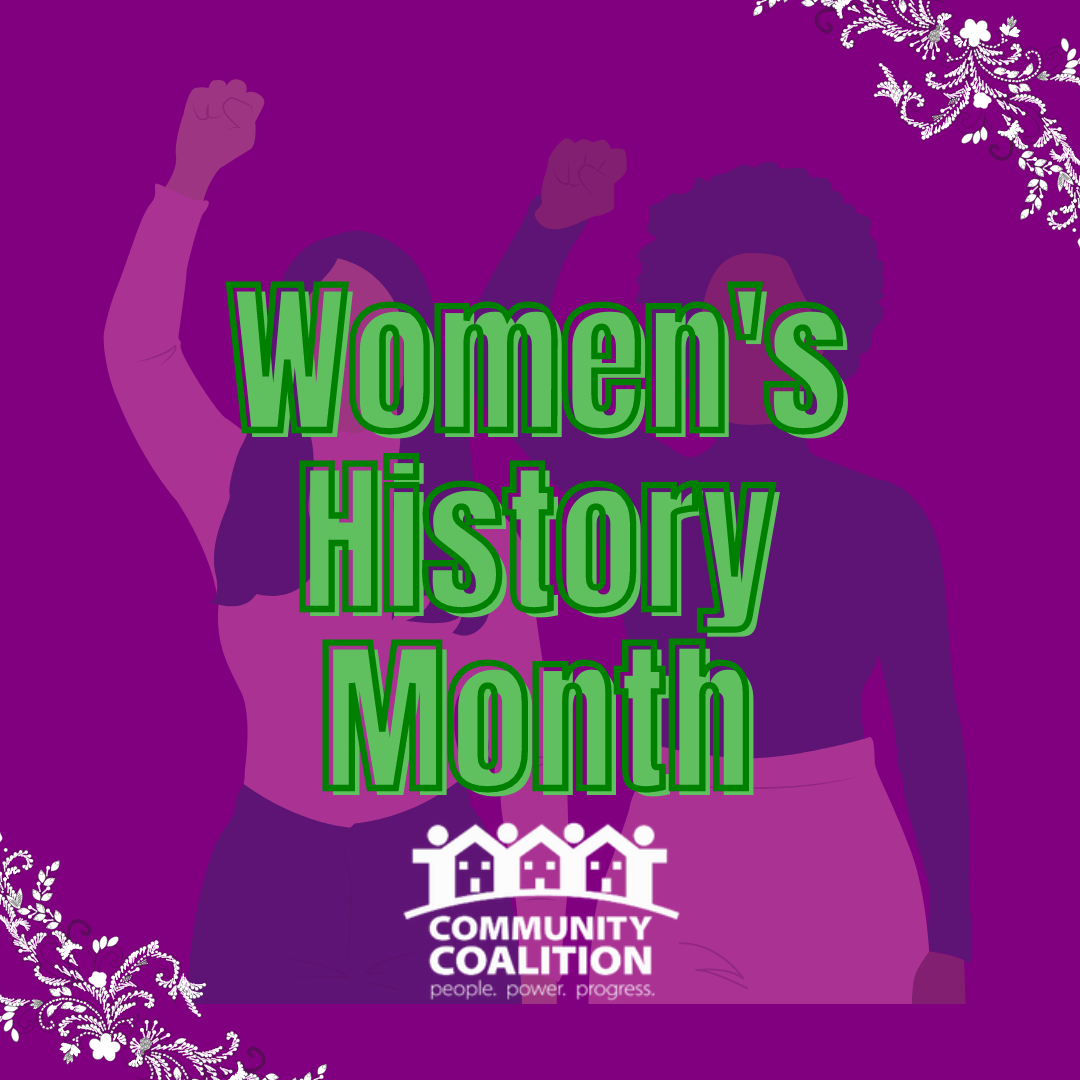
14 Mar Women’s History Month: Telling Our Stories Through Art
By Julio Esperias, Manager of Communications
3.14 is commonly known as Pi Day and refers to the mathematical constant π (3.14). But it is also National Write Your Story Day, celebrating who you are and where you came from through the use of the written word. After-all, a good story can change the worldWomen’s History Month commemorates women’s groundbreaking contributions to society and culture. Throughout this month, Community Coalition will share stories of incredible women of color who have worked hard to break down barriers. BIPOC Women’s stories matter and our goal is to preserve their narratives for future generations. We honor the everlasting impact they have made in their industries, families, communities, and society.

In a vast sea of stories, artists utilize the power of visuals – telling stories through images rather than words. It is undeniable that a picture is worth a thousand words, and artists have the power to tell great stories through the visual arts. During the Harlem Renaissance and the Civil Rights Movement, Black women emerged as prominent artists. One artist in particular, Laura Wheeler Waring, played a critical role in breaking through gender and race barriers. Waring is considered one of the major artists of the Harlem Renaissance and is best known for her portraits of prominent African American civil rights figures, like author W.E.B. Du Bois and singer Marian Anderson.
She championed making art education available to Black students at the historically Black Cheyney State Teachers College in Pennsylvania (now Cheyney University), where she directed both music and art departments until she died in 1948.
Waring’s works are in the permanent collection of the National Portrait Gallery
Artists record human history and help shape our culture and our views. Throughout time artists have focused their work to tell stories of racial injustice and the impact of law enforcement in our communities. At Community Coalition, we are fortunate to have Gerri Lawrence, an artist by training, serve as our now-Chief Operating Officer. Gerri attended UCLA where she studied Art and Education. Prior to joining Community Coalition, she worked in the arts and education sector for non-profit organizations.

Since joining CoCo in 2011, Gerri has leveraged her background to support organizational growth and help advance strategic initiatives. Gerri co-led critical components to successfully advance a $6M capital campaign that upgraded Community Coalition’s headquarters into a state-of-the-art civic hub. She served as the organization’s Deputy Director of Advancement to help raise the organization’s annual budget and secure funding streams for new programming, such as the growth of arts and culture strategies. Gerri has also directly leveraged her artistic talent to contribute to the build-out of key artivism (art+ activism) strategies at Community Coalition.
In addition to supporting key backbone work, Gerri has collaborated to create important movement pieces. Her work includes a community-driven mosaic commemorating the life of Trayvon Martin, which was featured in the exhibit, Manifest Justice that used art as a vehicle to highlight racial and social inequities Black and Brown communities. Gerri collaborated with Raul O’Campo, SCYEA Alum, and former Community Coalition Board member, to create the “Trayvon Memorial”. This memorial features the image of the well-recognized picture of Trayvon in a hoodie and is assembled from hundreds of snapshots of everyday people wearing hoodies to show collective solidarity and grief alongside his family and the larger community.
She also collaborated on “Angels of the Movement,” with Glauz Diego, SCYEA Alum and Community Coalition’s Director of Arts and Culture, in an installation featured at Community Coalition’s Reimagine Justice Exhibit that commemorated the 25-year mark of the 1992 Civil Unrest in South Los Angeles, a critical flashpoint leveraged to highlight disinvestment, police brutality and racial injustice in LA, while engaging thousands in policy efforts that center the voices of Black and Brown residents in South LA.
Gerri reflects that “after studying art in a white-centric university, it was very difficult for me to see my purpose in the arts after graduating. I am grateful to South LA and Communtiy Coalition for giving me a platform to proudly see myself as an artist again. And I am most grateful for the art that I have been able to do with community and for the community to tell our stories, and elevate our complex beauty.”



No Comments